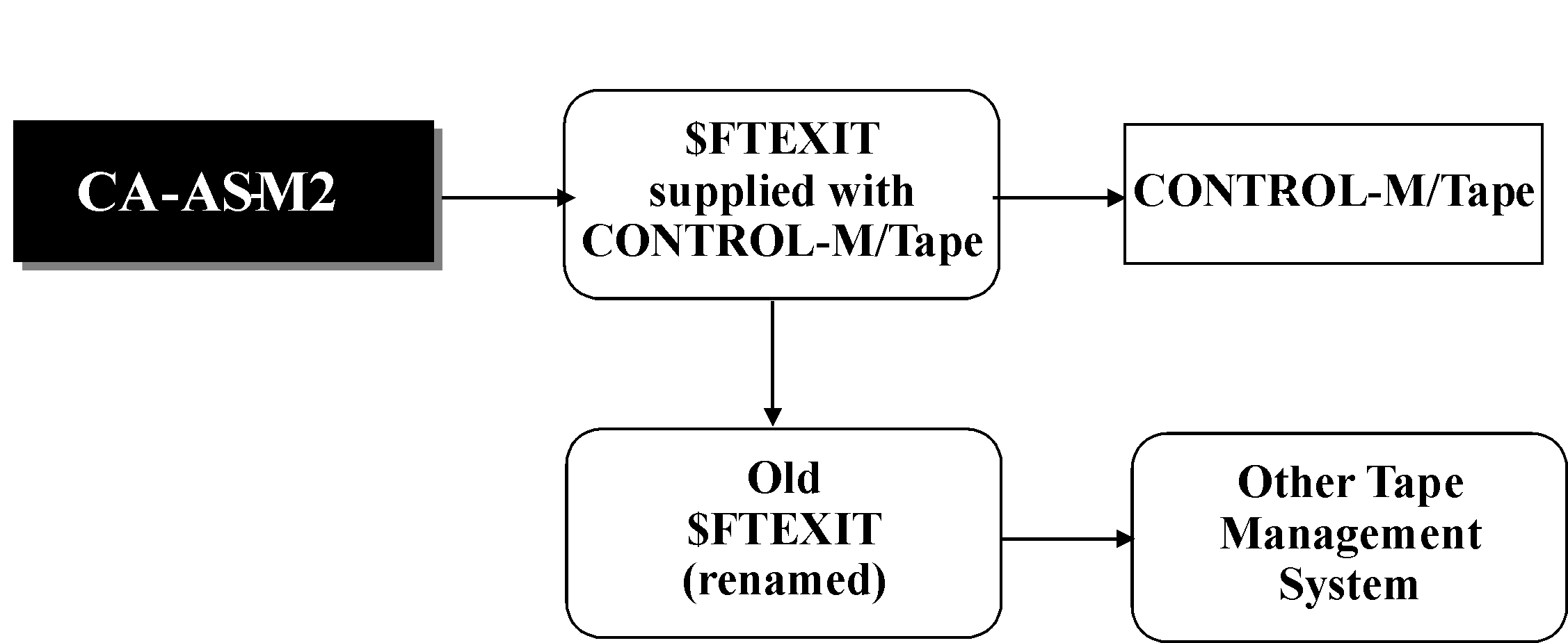Control-M/Tape and CA-ASM2 interface through CA-ASM2 Exit $FTEXIT (the Free Tape Exit). CA-ASM2 passes control to this exit before freeing a tape. In the sample for this exit supplied with Control-M/Tape (the AS2FTEXT member in the IOA SAMPLE library), the Control-M/Tape is called to expire the volume being freed (that is, to mark it SCRATCH in the Control-M/Tape Media Database).
Note: Control-M/Tape does not need to communicate with CA-ASM2 Exit $NTEXIT (New Tape). If Control-M/Tape is the only tape management product installed at your site, verify that NONE is specified for the &TAPEMGT parameter of this exit before it is compiled.
Use the following steps to activate the CA-ASM2 interface for Control-M/Tape:
Definition of tape pools is not related to the value of the $TAPPOOL CA-ASM2 installation parameter. Tape pools must be defined for CA-ASM2 tapes regardless of whether CA-ASM2 tape pools are enabled. Pool definitions under Control-M/Tape ensure that only CA-ASM2 SCRATCH tapes are used by CA-ASM2 jobs.
The data set names in the rules you define must be identical to those that appear in MOUNT messages for the relevant volumes. If you changed the "Dummy" data set name (written as the first file on each CA-ASM2 tape), use the new name in the rules as well.
Figure 39 CA-ASM2 Calling Exit $FTEXIT

If you are currently not using Exit $FTEXIT, continue with Step 4 below.
If this exit is already in use at your site (that is, by another tape management system), use the following steps to integrate your current $FTEXIT exit with Control-M/Tape’s exit in Global Test and Global Phased modes. You should stop using your other product’s $FTEXIT exit when you first activate Control-M/Tape in Global Production mode.
CA-ASM2 now calls the $FTEXIT exit supplied with Control-M/Tape that in turn calls the old $FTEXIT (that has been renamed).
Figure 40 CA-ASM2 Calling Exit $FTEXIT Supplied with Control-M/Tape

CA-ASM2 receives a return code from the exit that communicates with the old tape management system. (This exit was originally named $FTEXT.)
Parent Topic |